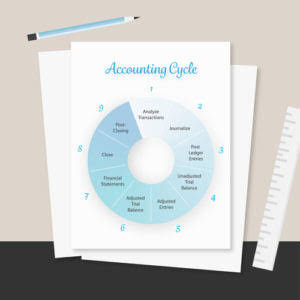Content

However, the firm only used half of the wood in the actual chair manufacturing process. The builders worked 50 hours each on chair manufacturing during the period. The firm applies all manufacturing overhead costs to products based on direct labor hours. To calculate ending work-in-process, the firm must first solve for total manufacturing costs for the period.
The value should only include raw materials, overhead, and direct labor spent so far. Projected costs for finishing the goods are not included as they will be listed under the “Expense” line of the next cash flow statement.
Hire a 3PL to Manage Your Inventory and Fulfillment Process
The more time products spend in an unfinished state, the more likely they are to be lost or damaged in the process. This straightforward explanation of WIP inventory includes a step-by-step formula and explanation of the place of WIP inventory in the end-to-end supply chain. And, finally, once the WIP inventory becomes finished goods, the $5,000 is debited to the finished good account and $5,000 is credited back to the WIP inventory account. Keeping tabs on your work in process inventory requires some bookkeeping. If you’re not an accountant, you may wonder how a work in process inventory journal entry looks. Here’s a simple example that shows how records shift from debits to credits throughout the production cycle.
What is MRO example?
This means any material or tool that helps employees do their job, but is neither part of the end product or service, nor central to the company's output. Examples of MRO include personal protective equipment (PPE), batteries, machine part replacements, office supplies, computers, and furniture.
Get instant access to video lessons taught by experienced investment bankers. Learn financial statement modeling, DCF, M&A, LBO, Comps and Excel shortcuts. If we enter those inputs into our WIP formula, we arrive at $25 million as the ending work in progress , reflecting an increase of $5 million in WIP from the beginning to the end of the period. Suppose a manufacturer is attempting to calculate its work in progress for the end of the latest fiscal year, 2021. For instance, the WIP inventory could be undergoing finishing touches prior to being marked as complete. By using the above-given data, do the calculation using all three methods.
You must cCreate an account to continue watching
Work in progress is a term used to describe inventory that is partially finished and currently amidst the production cycle. Learn about work-in-process inventory and understand how to use a work-in-process inventory account. Then you find that you have invested $225,000 in production costs for the quarter, and the total value of your finished goods is $215,000.

There’s less risk to assume and less uncertainty to wrestle with on the balance sheet. Most ecommerce businesses rely on a supplier or manufacturer for sellable inventory. The process and flow of WIP inventory are important to understand because they can indicate how efficient your supplier or manufacturer is at producing finished goods. By working closely with your supplier and other partners in your retail supply chain, like a 3PL company, you can find ways to optimize the supply chain. Assemble-to-stock is when a company assembles items from parts it already has stored in its warehouse. When you receive an order, you take the shoe that the customer ordered and then put it together with other parts like the shoelaces and bottoms.
Example of Work in process inventory
So here we have a table that shows the WIP costs over the month of June. This takes care of the first part of our equation before we get to labor costs and manufacturing overheads. But until they do, they are an area of cost which should be isolated from your finished products. There is a great benefit to doing this asyou will find that a lot of your production bottlenecks and areas for improvement come in WIP manufacturing.
Is WIP an inventory?
In accounting, WIP is considered a current asset and is categorized as a type of inventory.
Work in Progress represents incomplete goods still in the production process, i.e. the manufacturing stage between raw materials and finished goods. So for the purposes of accounting, WIP inventory is the total value of any unfinished goods, and although they can’t be sold, these goods are counted as an asset on a balance sheet. It’s important to include WIP inventory as an asset https://www.bookstime.com/ when calculating the value of your business for finding investors or securing financing. On the accounting side, calculating WIP inventory is also important for understanding the true value of your inventory for tax purposes. The terms ‘work in process’ and ‘work in progress’ are often used interchangeably, but depending on the industry, they could mean something different.
What is the beginning work-in-process inventory?
Because as much as we would like to keep materials at optimal levels, it’s rarely that easy. The reasons for it are plenty and often it comes down to the fact that many products and assembly items make use of the same materials. But one of the main problems comes in managing your material availability. Now we just have to add work in process inventory on the labor costs and manufacturing overheads. Each assembly item is being calculated separately to give the total WIP costs at the end of the month. If we zone in on handlebars, for example, we can see that the business started off with $323 worth of handlebars in June and ended up with $212 worth at the end of the period.
- This inventory contains any products of goods or services that are in their final form.
- But ultimately, the takeaway point here is that your WIP manufacturingis not to be taken lightly.
- This covers everything from the overhead costs to the raw materials that come together to form the end product at a given stage in the production cycle.
- The ending work in progress inventory is important for a couple of reasons.
A piece of inventory becomes labeled as work-in-progress when raw material combines with human labor. When the product is finalized, it switches from WIP to being categorized as a finished product. Finally, when the product is sold, it moves from a form of inventor to cost of goods sold on the balance sheet. A work-in-progress is the cost of unfinished goods in the manufacturing process including labor, raw materials, and overhead. Cost of processing is significant because each semi-finish product moves through the various manufacturing steps. A firm accounts for the work in progress towards the end of the accounting period. The accounting of WIP helps a company to determine the value of inventory that is in the production process.
Advantages of Work In Process
Managing WIP inventory requires coordination between several functions within a company, as well as with suppliers and customers. Higher WIP inventory levels are advantageous in that they can support a surge in demand, as well as improve cycle time since there is more material in production. However, this can also increase storage costs and obsolescence risk, as well as lead to waste if demand is lower than expected.
3PL can help by managing your inventory and improving your supply chain, which includes optimizing your WIP inventory for your unique business model. Though you may buy some items that are already assembled and ready to be purchased, others may require more work. These items and the cost of producing them make up your WIP or work in process inventory. Effectively managing your inventory is one of the critical steps that one must take to run a successful business. Be sure to partner with software service providers such as Emergeapp to help you achieve your inventory management goals. Suppose you understand your WIP inventory and the impact it has on your business.
It’s all of your inventory after the raw materials stage, but before the stage of the finished product. Whether you have raw materials that need to be stored or final products that are ready to be shipped, a 3PL can handle it all. Manufacturing costs are a combined total of raw materials, human or machine labor expenses, and overhead costs.
- It is also considered more orderly as the order of receipt of materials is easily identifiable.
- However, the firm only used half of the wood in the actual chair manufacturing process.
- However, it’s hard for businesses to save money on a process that is difficult to quantify in dollars.
It is important to note that WIP is considered a current asset since it is inventory meant to be converted into cash within a year. All companies must therefore ensure they value their WIP correctly, especially for taxation purposes. WIP is calculated after a given period, either monthly, quarterly or annually. Typically, the ending WIP for a given accounting period automatically translates into the beginning WIP for the next period. The ending WIP roll-forward starts with the beginning WIP balance, adds the manufacturing costs, and then deducts the cost of goods manufactured . The beginning work in progress inventory is the ending WIP balance from the prior accounting period, i.e. the closing carrying balance is carried forward as the beginning balance for the next period.
Using this total, subtract costs of goods produced
There’s not much point in looking into your WIP manufacturing without analyzing your raw materials inventory. This is the foundation of your production and making sure that your material availability is optimized is vital to your entire manufacturing business. So, let’s fast-forward our calculations and say that our total labor costs came to $1650 for June, whilst manufacturing overheads came to $750. Of course, your business accountant will be very happy if your numbers ever come out this round. Any inventory that moves from raw materials and is manipulated by human or machine labor, but is not yet a complete product, is considered to be work-in-process inventory. The WIP account keeps track of inventory that isn’t yet completed, and is increased by additions of direct materials, direct labor and allocated overhead. Cash Flow and Financing – Many companies use short-term financing, including WIP Inventory Financing, to address short-term cash flow issues.

